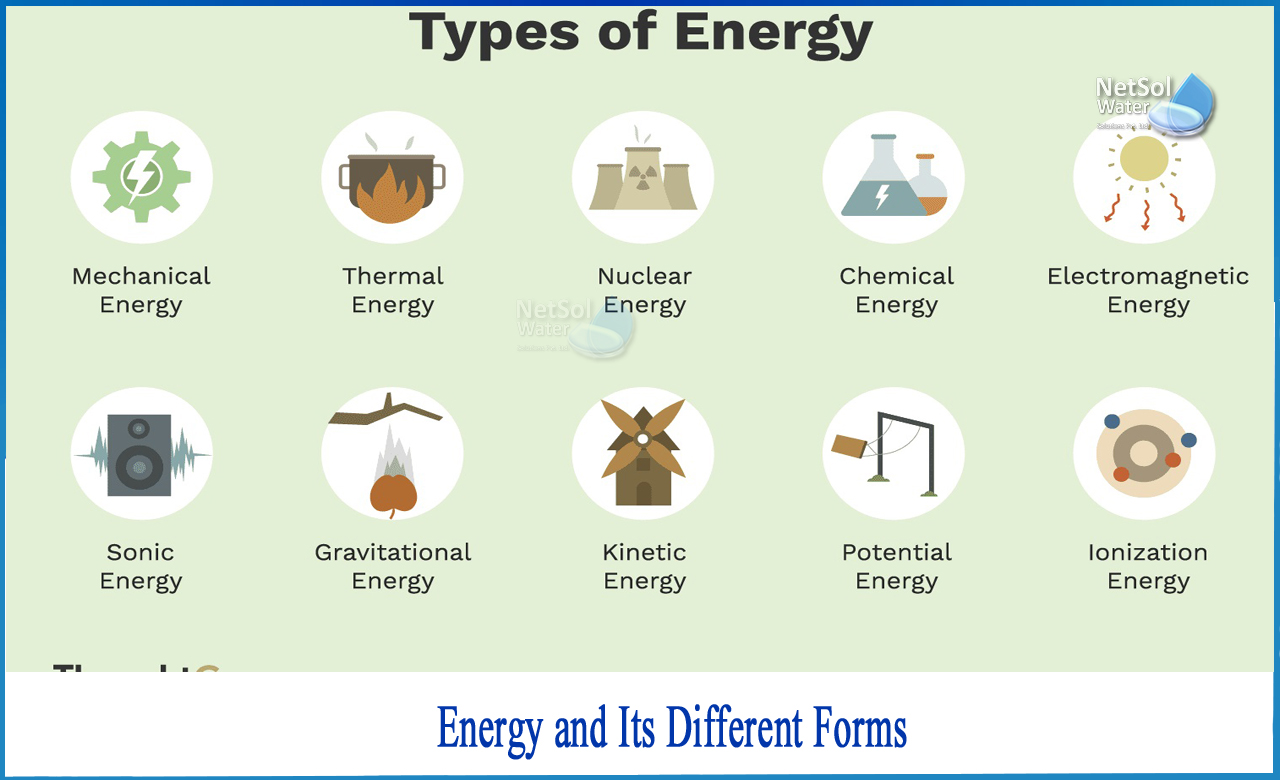What are the 5 different forms of energy?
In this blog we discuss top 5 different forms of energy and there source. The details are given below
What is Hydro power?
Although water is approximately 800 times denser than air, even a slow-moving stream of water or a moderate sea swell can produce significant amounts of energy. Water energy comes in a variety of forms:
• Small hydro systems are hydroelectric power plants with a capacity of up to 50 megawatts. On smaller rivers or as a low-impact development on bigger rivers, they are frequently used.
• Run-of-the-river hydroelectric power plants use rivers to generate electricity without the need for a big reservoir. The water is often transported along the river valley's side (through channels, pipes, and/or tunnels) until it reaches a height just above valley floor, where it can then fall through a penstock to power a turbine. Many run-of-river hydropower installations are classified as micro hydro or Pico hydro.
Wave power, which absorbs the energy of ocean surface waves, and tidal power, which converts the energy of tides, are two types of hydropower that have the potential to be commercially viable in the future.
What is Wind Power?
Wind turbines can be powered by air flow. The rated power of modern utility-scale wind turbines ranges from 600 kW to 9 MW. The power available from the wind is proportional to the cube of the wind speed, therefore as the wind speed grows, so does the power output, until the turbine reaches its maximum output. Wind farms are best built-in areas with stronger and more consistent winds, such as offshore and high-altitude sites.
Wind energy's long-term technical potential is estimated to be five times current global energy production, or 40 times electricity power demand, providing all practical restrictions are eliminated.This would necessitate the installation of wind turbines over huge regions, especially in areas with stronger wind resources, such as offshore. Because offshore wind speeds are 90 percent higher than onshore, offshore resources may generate significantly more electricity than land-based turbines.
What is Solar Energy?
Solar energy, such as photovoltaics, concentrated solar power (CSP), solar heating, concentrator photovoltaics (CPV), solar architecture, and artificial photosynthesis, is harnessed utilising a variety of ever-evolving technologies. Depending on how they capture, convert, and distribute solar energy, solar technologies are classified as either passive or active solar.
Orienting a structure to the Sun, selecting materials with favourable thermal mass or light dispersion properties, and designing rooms that naturally circulate air are all examples of passive solar approaches.
Solar thermal energy, which uses solar collectors for heating, and solar power, which generates electricity either directly using photovoltaics (PV) or indirectly using concentrated solar power, are both active solar technologies (CSP). Solar PV has grown into a multibillion-dollar, fast-growing sector that is continuing to increase its cost-effectiveness and, along with CSP, has the highest promise of any renewable technology. Lenses or mirrors, as well as tracking systems, are used in concentrated solar power (CSP) systems to focus a huge region of sunlight into a narrow beam.
What is Bio Energy?
Biomass can be used as an energy source either directly, by burning it to produce heat, or indirectly, by converting it to different forms of biofuel. The biomass can be converted to biofuel and can be accomplished using a variety of processes, which can be divided into three categories: thermal, chemical, and biochemical.
The most common biomass energy source is wood. Biomass can be transformed to other energy sources like methane gas or vehicle fuels like ethanol and biodiesel. Methane gas, commonly known as landfill gas or biogas, is released by rotting rubbish, agricultural, and human waste. Cellulosic biomass, such as trees and grasses, is also employed as a feedstock for ethanol production, thanks to advances in technology.
What is Geothermal Energy?
Thermal energy is generated and retained in the Earth to produce high-temperature geothermal energy. The energy that determines the temperature of matter is known as thermal energy. Earth's geothermal energy comes from both the planet's creation and the radioactive decay of minerals. Low-temperature geothermal references to the use of the Earth's outer crust as a thermal battery to facilitate sustainable thermal energy for building heating and cooling, as well as various refrigeration and industrial applications.
A geothermal heat pump and a ground-coupled heat exchanger are combined to transport heat energy into the Earth (for cooling) and out of the Earth (for heating) on a yearly basis in this type of geothermal.
Netsol Water is Greater Noida-based leading water & wastewater treatment plant manufacturer. We are industry's most demanding company based on client review and work quality. We are known as best commercial RO plant manufacturers, industrial RO plant manufacturer, sewage treatment plant manufacturer, Water Softener Plant Manufacturers and effluent treatment plant manufacturers. Apart from this 24x7 customer support is our USP. Call on +91-9650608473, or write us at enquiry@netsolwater.com for any support, inquiry or product-purchase related query.



